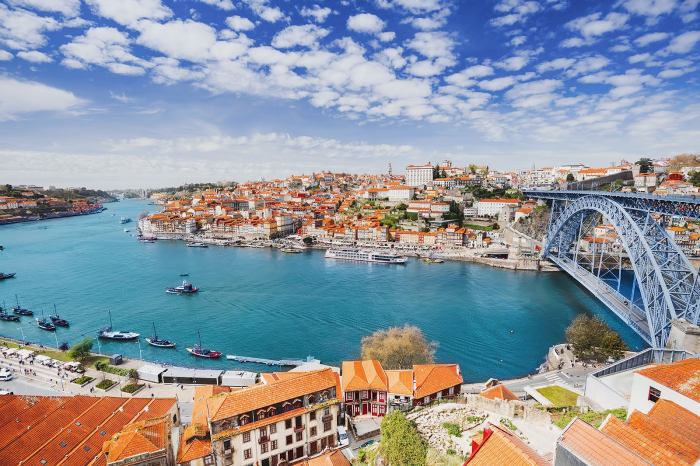Why hotels use white sheets? It’s a question that often sparks curiosity. Beyond the seemingly simple answer, lies a fascinating interplay of history, practicality, psychology, and even branding. From the evolution of hospitality standards to the subtle impact on guest perception, the choice of white sheets speaks volumes about the industry’s approach to creating a welcoming and memorable experience.
This exploration delves into the reasons behind this widespread practice. We’ll examine the historical context, the practical advantages, the psychological impact, and the practical considerations involved in maintaining the pristine white aesthetic. We’ll also look at alternative approaches and exceptions, along with the evolving preferences of guests.
Historical Context
The preference for white sheets in hotels isn’t a modern whim; it’s a historical evolution deeply rooted in societal norms, hygiene practices, and aesthetic trends. Understanding this evolution provides insight into the enduring appeal of white as a symbol of cleanliness and luxury in hospitality.The choice of sheet color, from the earliest inns to today’s high-end resorts, has been influenced by a complex interplay of factors.
Initially, practicality often dictated color choices. However, as societal values and technological advancements evolved, the meaning and significance of sheet color shifted. This historical context provides a richer understanding of why white sheets remain a dominant feature in the hotel industry today.
Early Hospitality Practices
Early lodging establishments, often simple inns and taverns, weren’t necessarily concerned with the aesthetic of bedding. The primary focus was on providing a place to rest and sleep, with little emphasis on elaborate bedding standards. Materials available and personal hygiene standards were significantly different. Sheets, if provided, might have been of varying colors and made from natural fibers.
This simple, practical approach didn’t prioritize specific colors.
Evolution of Bedding Standards
As the hospitality industry developed, so did standards for bedding. The Victorian era, for instance, witnessed a rise in the importance of cleanliness and hygiene. This era saw the introduction of more sophisticated bedding materials and an increasing emphasis on cleanliness, making white, with its association with purity, a more appealing choice. The advent of mass production and improved textile technology further enabled the widespread adoption of white sheets, leading to a gradual shift from a variety of colors to the predominance of white.
Influence of Hygiene Practices
The importance of cleanliness and hygiene in the hospitality industry has been a critical factor in the use of white sheets. White, with its ability to easily highlight stains, served as a clear visual indicator of cleanliness and care. This practical aspect played a crucial role in establishing white sheets as a standard in the hospitality industry, as the ease of maintaining cleanliness was paramount.
In contrast, darker colors might conceal stains more effectively, making the task of maintaining a consistently clean appearance more challenging.
Examples of Historical Bedding Practices
Historical records and travelogues offer glimpses into the diverse bedding practices of the past. In 18th-century Europe, for example, linen sheets, often in various colors, were a status symbol for wealthier travelers. In contrast, travelers in more remote areas might have used less refined materials, with color playing a less significant role. These differences reflect the changing standards and expectations of hospitality across different eras and regions.
This illustrates the varied practices, demonstrating how the preference for white sheets evolved alongside changing societal norms.
The Rise of White Sheets
The late 19th and early 20th centuries saw a clear rise in the use of white sheets in hotels and lodging establishments. This coincided with growing awareness of hygiene and sanitation practices, and white’s association with cleanliness became more pronounced. The ease of maintaining a clean and crisp appearance through regular laundering further cemented the position of white as the preferred color.
This trend towards white continued into the mid-20th century and beyond, becoming a defining feature of the modern hotel experience.
Practical Reasons for White Sheets
Hotels often prioritize white sheets for a variety of practical reasons, transcending mere aesthetic appeal. The choice of white goes beyond a simple color preference; it’s deeply rooted in the practicalities of maintaining a clean and hygienic environment for guests. This selection, while seemingly simple, is a strategic choice with significant implications for guest experience and operational efficiency.The primary practical reason for white sheets is their inherent visual impact on perceived cleanliness.
White reflects light, making any dirt or stains immediately apparent. This visibility is crucial for ensuring the highest standards of hygiene and cleanliness, creating a positive and reassuring impression on guests.
Advantages of White Sheets in Hygiene and Cleanliness
White sheets are highly advantageous in maintaining a sense of cleanliness and hygiene. Their ability to visually highlight even minor imperfections ensures that any soiling is readily apparent, facilitating prompt cleaning and maintenance. This immediate visibility encourages meticulous cleaning routines, contributing to a more hygienic environment. Moreover, the lack of intricate patterns or colors allows for easier stain removal, a significant factor in maintaining consistently high standards of cleanliness.
The Role of White in Reflecting Light and Maintaining Cleanliness
White’s reflective properties play a crucial role in the perception of cleanliness. Light reflecting off a white surface accentuates any visible particle or stain, making it stand out against the background. This immediate visibility allows for prompt detection and resolution, preventing accumulation of dirt and maintaining the high standard of cleanliness guests expect.
Hotels use white sheets for a reason beyond aesthetics. They’re incredibly easy to clean, ensuring a pristine look, which is crucial for a luxurious experience. This pristine appearance, in turn, is often linked to the luxurious and upscale reputation of the best casinos in las vegas best casinos in las vegas. Plus, white sheets reflect light, making rooms feel brighter and more inviting, perfect for a relaxing stay.
Ultimately, the goal is to create a spotless and appealing environment for guests.
Impact of White Sheets on Perceived Cleanliness
The color white has a powerful impact on the perception of cleanliness. The stark contrast between the white sheet and any foreign substance creates a visual cue of purity and freshness. Guests subconsciously associate white with cleanliness, leading to a more positive perception of the hotel’s overall hygiene standards. This effect is particularly noticeable when compared to colored sheets.
Colored sheets, while aesthetically pleasing, can often mask dirt and stains, potentially diminishing the perception of cleanliness.
Comparison of Perceived Cleanliness of White Sheets with Other Colors
A comparison between white and colored sheets highlights the impact of color on perceived cleanliness. White sheets, due to their reflective nature, effectively showcase any dirt or stains, leading to a more immediate and apparent indication of cleanliness. Colored sheets, particularly darker hues, can obscure dirt and stains, potentially creating a less clean impression, even if the sheets are perfectly clean.
The visual clarity of white sheets enhances the perception of cleanliness and hygiene, leading to a more positive guest experience.
Factors Affecting the Perceived Cleanliness of Hotel Sheets
Several factors contribute to the perceived cleanliness of hotel sheets beyond the color. The quality of the fabric, the frequency of laundry, the effectiveness of cleaning procedures, and the general maintenance of the linens all play a significant role.
- Fabric Quality: High-quality, durable fabrics are less likely to show wear and tear, contributing to a sense of cleanliness. Thin, delicate fabrics might show wrinkles or stains more easily, potentially affecting the overall perception of cleanliness.
- Laundry Frequency: The frequency of laundry significantly impacts the cleanliness of sheets. Regular, thorough laundry cycles remove dirt, bacteria, and other contaminants, maintaining a consistently clean environment. Infrequent laundry can lead to a build-up of contaminants, affecting the perception of cleanliness.
- Cleaning Procedures: The effectiveness of the cleaning procedures used for sheets directly influences their perceived cleanliness. Proper cleaning techniques, including the use of appropriate detergents and sanitizers, are essential for maintaining the highest standards of hygiene. Inadequate cleaning procedures can lead to lingering odors and contaminants, diminishing the perceived cleanliness.
- Maintenance of Linens: Regular maintenance of linens, including proper storage and handling, prevents damage and contamination. Damage to sheets, such as tears or holes, can detract from the overall perception of cleanliness.
Psychological Impact of White Sheets
White sheets, a seemingly simple element of a hotel room, hold a surprisingly powerful influence on guests’ perceptions and experiences. Beyond their practical functions, they contribute significantly to the overall atmosphere and emotional response. The subtle psychology of color and texture plays a key role in creating a desired ambiance, influencing feelings of comfort, safety, and cleanliness.The color white, often associated with purity, cleanliness, and simplicity, is a powerful tool in design and hospitality.
It evokes a sense of freshness, a blank slate, and a clean start, setting the stage for a positive guest experience. The psychological impact of white sheets extends beyond mere aesthetics, creating a subtle yet significant impact on the guest’s emotional state.
The Effect of White on Calmness and Purity, Why hotels use white sheets
White’s association with purity and cleanliness is deeply ingrained in human culture. From hospitals to sterile environments, white signals a sense of order and meticulous attention to detail. This inherent association carries over to hotel rooms, where white sheets contribute to a feeling of calmness and serenity. The absence of color distractions allows the mind to relax, creating a peaceful and tranquil environment.
This peaceful environment is especially valuable in a fast-paced world, where travelers seek respite and rejuvenation.
White’s Role in Evoking Trust and Safety
The color white often instills a sense of trust and safety. It is often used in institutions where trust and security are paramount, like banks and government buildings. This trust-inducing characteristic is reflected in the use of white sheets in hotels. The simple, unadorned nature of white can signal reliability and trustworthiness, making guests feel secure and comfortable in their surroundings.
Examples of White in Other Contexts
The use of white extends beyond hotels, creating a similar psychological effect. White uniforms are often worn by medical professionals, police officers, and other professions to reinforce the concept of cleanliness and trustworthiness. Similarly, white lab coats in scientific research environments emphasize precision and purity. White spaces in art galleries and museums can create an atmosphere of calm reflection and appreciation.
Table Illustrating Psychological Impact of Sheet Colors
| Sheet Color | Psychological Impact | Guest Perception |
|---|---|---|
| White | Purity, cleanliness, calmness, trust, safety | Comfortable, secure, relaxed, refreshed |
| Bright Colors (e.g., red, blue) | Stimulation, excitement, energy | Energetic, potentially agitated, less relaxed |
| Muted Colors (e.g., beige, grey) | Calmness, neutrality, subtle sophistication | Relaxed, but possibly less striking |
Practical Considerations in Sheet Color Choices
Choosing the right sheet color for a hotel goes beyond aesthetics. Practical factors like cost, durability, and maintenance play a crucial role in the long-term success of a hotel’s operations. White sheets, while popular, come with both advantages and disadvantages that need careful consideration. Understanding these practical implications is essential for making informed decisions about sheet color and material selection.
Practical Challenges of White Sheets
White sheets, while often preferred for their perceived cleanliness and aesthetic appeal, present certain practical challenges. One significant concern is the rapid visibility of stains. A single food particle or accidental spill can instantly mar the pristine white, demanding more frequent laundering and potentially leading to higher costs in the long run. This high visibility of imperfections can also affect the perception of cleanliness and overall guest satisfaction, necessitating a higher level of attention to detail in maintenance.
Furthermore, the frequent washing and bleaching needed to maintain the bright white appearance can potentially shorten the lifespan of the fabric.
Cost-Effectiveness of White Sheets
The cost-effectiveness of white sheets is multifaceted. While the initial cost of white sheets might seem comparable to colored sheets, the long-term expenses can differ substantially. The increased frequency of laundering and bleaching required to maintain the bright white appearance can significantly increase the cost of utilities, detergents, and maintenance labor. Moreover, the need for frequent replacement due to stains and wear can add to the overall operational costs.
Durability and Maintenance Considerations for White Sheets
Maintaining the pristine whiteness of white sheets requires significant effort. The frequent laundering and bleaching needed to combat stains and discoloration can impact the durability of the fabric over time. This increased wear and tear can necessitate more frequent replacements compared to colored sheets, which might hide stains and discoloration more effectively. The type of fabric, the quality of the materials, and the severity of the staining will influence the longevity of the sheets.
Comparison of Longevity Between White and Colored Sheets
The longevity of white sheets often depends on the fabric quality and the frequency of use. Colored sheets, especially those with a substantial pigment, can sometimes hide stains and wear more effectively than white sheets, leading to a potentially longer lifespan before requiring replacement. This doesn’t mean colored sheets are inherently more durable; it just means the visible damage might occur later.
Factors like the type of dye used and the level of care taken during washing will influence the longevity of both white and colored sheets.
Maintenance Requirements Comparison Table
| Sheet Color | Stain Visibility | Laundering Frequency | Bleaching Frequency | Potential for Damage |
|---|---|---|---|---|
| White | High | High | High | High |
| Light Colors | Medium | Medium | Medium | Medium |
| Dark Colors | Low | Low | Low | Low |
Environmental Impact of Different Sheet Colors and Materials
The environmental impact of sheet color choice is interconnected with the manufacturing process, material composition, and the overall maintenance practices. White sheets, in some instances, might require more water and energy for bleaching, which can contribute to a higher carbon footprint. However, the actual environmental impact depends on several factors, including the specific materials used, the water source, the energy efficiency of the laundry facilities, and the overall disposal method for the used sheets.
Alternatives and Exceptions
While white sheets are the dominant choice in hotels, alternative colors and textures are increasingly employed, offering a distinct aesthetic and experience. These choices are often driven by specific design philosophies, target markets, and the overall atmosphere the hotel aims to create. Beyond the practical and psychological aspects, hotels leverage non-white sheet choices as a strategic marketing tool.Beyond the ubiquitous white, hotels are experimenting with a diverse palette, each color choice conveying a unique message.
From subtle pastels to bold hues, these alternatives often reflect a specific design aesthetic, targeting a particular clientele, or supporting the hotel’s broader brand identity.
Alternative Sheet Colors Used in Some Hotels
Hotels often use a range of colors for their sheets, moving beyond the traditional white. These alternatives include pastel shades like lavender, sage green, or light blue, as well as bolder choices like deep blues, terracotta, or even warm creams. The choice of color frequently mirrors the hotel’s overall design and theme. For example, a hotel aiming for a spa-like experience might use calming pastel shades, while a boutique hotel targeting a younger demographic might opt for vibrant colors.
Specific Situations Where Non-White Sheets Are More Suitable
Certain hotel types and settings lend themselves to non-white sheets more readily. For instance, themed hotels, like those evoking a specific era or cultural identity, might use sheets reflecting that theme. Luxury hotels often use non-white sheets to reinforce their unique brand identity. Furthermore, specific room categories, such as suites or rooms designed for relaxation, might feature non-white sheets to enhance the overall ambiance.
Reasons Behind the Choice of Alternative Sheet Colors
The reasons for selecting non-white sheets are multifaceted. Hotels often choose colors to match their interior design, creating a cohesive and aesthetically pleasing environment. Furthermore, the color choice can align with the hotel’s target market. For example, a family-oriented hotel might choose a cheerful color like sunny yellow, while a romantic hotel might use a calming, pastel color scheme.
The colors also contribute to the overall atmosphere and ambiance, influencing the guest experience.
Marketing Strategies Using Non-White Sheets
Hotels utilize non-white sheets as a marketing tool to stand out from competitors. The distinctive look can attract attention and create a memorable experience. A unique sheet color can become a signature feature of a hotel, boosting its brand recognition. Hotels often highlight the unusual color in their marketing materials and online presence, further emphasizing their distinctive style.
Examples of Luxury Hotels Using Non-White Sheets and Their Reasons
Many luxury hotels, known for their commitment to a distinctive brand identity, utilize non-white sheets to convey sophistication and luxury. For instance, a hotel inspired by the Italian Renaissance might employ terracotta or deep ochre sheets. Another might use a sophisticated navy blue, creating a sense of timeless elegance. The selection is carefully considered, often influenced by the hotel’s design philosophy and target clientele.
A hotel aiming for a modern, minimalist aesthetic might opt for shades of gray or charcoal. In each case, the sheet color contributes to the overall image and experience the hotel wishes to project.
Hotels often use white sheets because they’re clean and bright, making rooms look fresh and inviting. This is especially important for tourists, like those visiting the Ecuadorian Galapagos Islands, who are often vaccinated and eager to explore. Knowing that tourists visiting the Ecuador Galapagos vaccinated tourists are taking precautions and following safety measures, hotels are keen to ensure pristine environments.
Ultimately, white sheets contribute to a sense of hygiene and a welcoming atmosphere, crucial for any visitor experience.
Comparison of the Image Projected by Different Sheet Colors
Different sheet colors evoke various emotions and create distinct images. White sheets often project a sense of cleanliness and simplicity, suitable for hotels prioritizing hygiene and a minimalist aesthetic. On the other hand, non-white sheets can convey a range of feelings, from relaxation and tranquility to sophistication and luxury, depending on the chosen color. A deep blue sheet can evoke a sense of mystery and sophistication, while a warm cream can convey a sense of comfort and warmth.
The careful selection of sheet color can significantly influence the guest’s perception of the hotel.
Guest Preferences and Perceptions
Choosing the right sheet color for a hotel isn’t just about aesthetics; it’s a subtle yet powerful way to influence guest experience and perceptions. Guest preferences play a crucial role in determining which hues will resonate most positively. From cultural nuances to marketing strategies, the color of the sheets can have a significant impact on the overall guest experience.Understanding these preferences allows hotels to tailor their offerings to specific demographics and market segments, ultimately maximizing guest satisfaction and loyalty.
The subtle influence of sheet color can be a valuable tool in creating a memorable and positive stay.
Guest Preferences Influence on Sheet Color Choices
Guest preferences are multifaceted and influenced by a range of factors, including personal taste, cultural background, and the specific hotel’s brand identity. A hotel aiming to attract a younger, trend-conscious demographic might opt for bolder colors, whereas a luxury hotel targeting a more mature clientele might favor classic white. These preferences often align with broader trends in design and fashion.
Cultural Perspectives on Sheet Colors
Different cultures have varying associations with colors. White, often preferred in Western cultures for its connotations of cleanliness and purity, might hold different meanings in other parts of the world. In some Eastern cultures, red might be associated with good fortune or celebration, potentially making it an attractive choice for certain hotel segments. Understanding these nuances is crucial for hotels operating in diverse markets.
Sheet Color as a Marketing Tool
The color of hotel sheets can be used strategically as a marketing tool. For instance, a hotel targeting families might use a vibrant color scheme to evoke feelings of warmth and happiness. Conversely, a hotel aiming for a sophisticated image might use a calming color palette to reflect tranquility and luxury. The color choice is often carefully aligned with the overall brand identity.
Perceptions of Sheet Colors Across Demographics
| Demographic | White Sheets | Colored Sheets | Reasoning |
|---|---|---|---|
| Young Adults (18-25) | Clean, simple, classic | Trendy, bold, eye-catching | Preference for modern, stylish designs. |
| Families | Cleanliness, safety | Warmth, playfulness | Emphasis on creating a comfortable and welcoming environment for children. |
| Business Travelers | Professionalism, neutrality | Subtle vibrancy | Desire for a calming and productive environment. |
| Luxury Travelers | Elegance, sophistication | Unique, distinctive | Preference for a luxurious and personalized experience. |
| Seniors | Familiar, comforting | Potential disorientation | Preference for familiar and predictable aesthetics. |
This table illustrates how different demographics perceive sheet colors. Note that these are general observations and individual preferences can vary significantly.
Reception of White vs. Colored Sheets Across Target Markets
White sheets often evoke a sense of cleanliness and simplicity, which can be attractive to many demographics. However, colored sheets can create a more vibrant and distinctive experience, particularly appealing to target markets seeking a more personalized and memorable stay. The reception of white versus colored sheets often depends on the specific hotel’s brand identity and the overall aesthetic.
Influence of Sheet Color on Guest Experience
The color of sheets can subtly influence a guest’s experience. For example, a calming blue might create a sense of peace and tranquility, while a warm yellow might promote a feeling of happiness and optimism. Hotels can use color psychology to create the desired atmosphere and enhance the overall guest experience. Careful consideration of the potential impact on the guest’s mood and perception is essential.
Maintenance and Cleaning

Maintaining the pristine white of hotel sheets is a meticulous process, requiring specialized techniques and equipment. The constant use and potential for staining, along with the high standards expected by discerning guests, demands rigorous cleaning and maintenance procedures. A single soiled sheet can quickly detract from the overall impression of a hotel, emphasizing the importance of effective upkeep.
Cleaning Procedures for White Sheets
The rigorous cleaning of white sheets is crucial to preserving their aesthetic appeal and maintaining hygiene. Regular and thorough washing, utilizing specialized detergents and appropriate water temperatures, is paramount. Frequent and consistent laundering ensures that sheets remain fresh and clean, extending their lifespan.
Challenges of Maintaining Pristine White
Maintaining the brilliant white of hotel sheets is a continuous challenge. The nature of guest interaction, coupled with the constant wear and tear, inevitably leads to the accumulation of dirt and stains. Over time, these impurities can discolor the sheets, demanding meticulous attention to detail during every wash cycle. This emphasizes the importance of proper cleaning procedures and the use of suitable detergents.
Specialized Detergents for White Sheets
Specialized detergents are essential for maintaining the white of hotel sheets. These formulations often contain enzymes designed to target specific types of stains and dirt, while being gentle on the fabric. Using the correct detergent is crucial for achieving optimal results and preventing premature wear and tear on the linens. Moreover, high-efficiency washing machines and appropriate water temperatures further enhance the effectiveness of these specialized detergents.
Hotels often use white sheets because they’re easy to clean and maintain, creating a feeling of pristine cleanliness. However, while you’re focused on the pristine white sheets, don’t forget some essential travel etiquette when visiting Italy. For example, avoid loudly slurping your pasta or taking photos in important historical sites without asking permission; check out what not to do as a tourist in Italy for more tips! Ultimately, keeping those sheets white and pristine is important for the hotel’s reputation, just as being a respectful tourist is important for the Italian culture.
Cleaning Methods for White and Colored Sheets
A well-organized approach to cleaning both white and colored sheets is crucial for maintaining consistent standards. Properly sorting and separating different colors from each other, as well as from whites, is paramount. Different cleaning methods, including pre-soaking, are employed for different types of stains, and the proper choice of detergent is essential for achieving optimal results. A standardized approach ensures consistent quality and reduces the risk of discoloration or damage to the fabric.
| Sheet Type | Pre-Treatment | Detergent | Water Temperature | Drying Method |
|---|---|---|---|---|
| White | Pre-soak with stain remover | Enzyme-based, bleach-safe detergent | Hot water (appropriate for fabric type) | Tumble dry on low heat |
| Colored | Spot-treat stains with color-safe product | Color-safe detergent | Warm water | Tumble dry on low heat or air dry |
Longevity of White Sheets
The longevity of white sheets is intricately linked to the cleaning methods employed. Proper care, including the use of appropriate detergents and water temperatures, can significantly extend the lifespan of white linens. Conversely, improper cleaning, such as using harsh detergents or incorrect water temperatures, can lead to premature wear and tear, causing discoloration and reduced longevity. Consistent maintenance is vital for maximizing the lifespan of white sheets, making them an economical choice in the long run.
Impact of Improper Cleaning
Improper cleaning procedures can have a significant impact on the appearance of white sheets. Using the wrong detergents, improper water temperatures, or neglecting pre-treatment of stains can lead to yellowing, dinginess, or the development of unsightly marks. Consequently, consistent and thorough cleaning is essential for preserving the original brilliance and freshness of the white sheets, maintaining the hotel’s reputation for cleanliness and high standards.
Materials and Production

White hotel sheets, a ubiquitous symbol of cleanliness and comfort, are more than just fabric. Their production, from raw material to finished product, plays a crucial role in their cost, quality, and environmental footprint. Understanding the intricacies of this process reveals why these seemingly simple textiles are so important to the hospitality industry.
Materials Used for White Sheets
The primary materials for white hotel sheets are cotton, linen, and blends. Cotton, a natural fiber, is often favored for its softness and absorbency. Linen, another natural fiber, offers a luxurious feel but requires special care. Blends, incorporating synthetic fibers like polyester, provide durability and wrinkle resistance, making them a popular choice for high-volume use in hotels. The choice of material directly impacts the sheet’s drape, texture, and cost.
Production Processes of White Sheets
The production of white sheets involves several stages. First, raw materials are processed. Cotton, for example, undergoes ginning to separate the seeds from the fibers. Then, the fibers are spun into yarn, and the yarn is woven into fabric. The fabric is then bleached and dyed (if needed), and often treated to improve softness, durability, and wrinkle resistance.
Finally, the fabric is cut and sewn into sheets.
Factors Affecting the Cost of White Sheets
Several factors influence the cost of white sheets. The type of material, the quality of the fibers, and the production methods all contribute to the final price. For example, premium Egyptian cotton, known for its superior quality, will command a higher price than standard cotton. Additionally, labor costs, energy consumption, and transportation costs also play a significant role in the overall cost of production.
Comparison of White and Colored Sheet Production
The production processes for white and colored sheets share some common steps, but the dyeing process is the key difference. White sheets typically undergo bleaching to achieve their bright hue. Colored sheets, on the other hand, require additional steps to add color. These processes can impact the overall cost and environmental impact of sheet production.
Environmental Impact of Different Sheet Materials
The environmental impact of different sheet materials varies. Natural fibers like cotton and linen can be more sustainable if grown using environmentally friendly practices. However, the cultivation of these fibers can require significant water resources. Synthetic fibers, while potentially more durable, can have a higher carbon footprint associated with their production and disposal.
Table of Pros and Cons of Different Sheet Materials
| Material | Pros | Cons |
|---|---|---|
| Cotton | Soft, absorbent, breathable, relatively affordable | Prone to wrinkles, can shrink, requires more care than some blends |
| Linen | Luxurious feel, durable, wrinkle-resistant, breathable | More expensive, requires more care, can be stiff when new |
| Cotton/Polyester Blend | Durable, wrinkle-resistant, softer than pure linen, good price point | May not be as breathable as pure cotton, can feel less luxurious |
Image and Branding: Why Hotels Use White Sheets
White sheets, a seemingly simple element in a hotel room, play a significant role in shaping a hotel’s brand and image. They contribute substantially to the overall aesthetic and perception of the establishment, impacting how guests experience and remember their stay. The choice of white sheets, often perceived as a hallmark of luxury and cleanliness, becomes a subtle but powerful communication tool.The consistent use of white sheets in hotels often creates a sense of order, purity, and sophistication.
This is a carefully cultivated image that hotels leverage to project a particular brand identity. The choice of sheet color is a conscious design decision, influencing the atmosphere and the overall experience for guests.
Role of White Sheets in Hotel Branding
White sheets are a powerful tool in establishing a particular brand image. Hotels often use this color to evoke a sense of cleanliness, luxury, and timeless elegance. This is further enhanced by the association with high-quality bedding and comfortable sleep experiences. A hotel chain consistently using white sheets projects a clear, recognizable image, helping customers associate it with a certain level of quality and reliability.
Contribution to Hotel Aesthetics
The use of white sheets contributes significantly to the overall aesthetic of a hotel room. The clean, uncluttered look of white sheets creates a sense of spaciousness and brightness, making the room feel more inviting and airy. This effect is particularly noticeable in rooms with natural light, where the white sheets amplify the feeling of openness and freshness. The simplicity of white sheets allows other design elements, such as artwork, furniture, and accessories, to stand out more prominently, enhancing the overall ambiance.
Creating a Luxurious and Upscale Image
White sheets, often associated with high-end hotels, play a critical role in projecting a luxurious and upscale image. The clean, crisp appearance of white linens often accompanies other luxurious touches, such as high-thread-count sheets, plush towels, and designer toiletries, to reinforce the impression of quality and refinement. The association with cleanliness and care reinforces the luxurious aspect. This meticulous attention to detail communicates a commitment to providing an exceptional guest experience.
Examples of Hotel Chains Using White Sheets
Many high-end hotel chains utilize white sheets as a core element of their branding. For example, luxury brands like The Ritz-Carlton and Four Seasons often showcase white linens prominently in their marketing materials and room designs. This consistent use of white sheets reinforces the brand’s image of luxury and sophistication, while the consistent use of the color white communicates a level of quality and reliability.
Mid-range chains also use white sheets, but often in conjunction with other design elements to maintain a sense of cleanliness and professionalism.
Perception Comparison: White vs. Colored Sheets
The perception of a hotel using white sheets differs significantly from one using colored sheets. White sheets often convey a sense of pristine cleanliness and luxury. Colored sheets, while potentially stylish, may not project the same level of cleanliness or sophistication. This is because white sheets are often associated with a level of care and maintenance that suggests high-quality standards.
Guests might perceive a hotel with colored sheets as more casual or less meticulously maintained, impacting their overall impression of the hotel.
Communicating Cleanliness with White Sheets
White sheets are exceptionally effective in communicating cleanliness. The stark contrast of white with any possible stains or marks makes it immediately apparent if the sheets are clean. This visual cue is crucial for guests, who often rely on visual cues to assess a hotel’s level of cleanliness. Hotels leverage this association to assure guests of a pristine environment, promoting a sense of hygiene and care.
Ending Remarks
In conclusion, the preference for white sheets in hotels is a complex phenomenon stemming from a confluence of historical, practical, and psychological factors. While practicality and cleanliness are key drivers, the choice of white often extends to projecting an image of luxury, trust, and purity. Ultimately, the decision is nuanced, influenced by guest preferences, brand image, and the ongoing evolution of hospitality trends.






